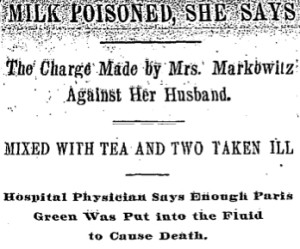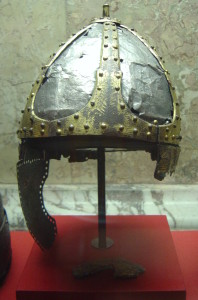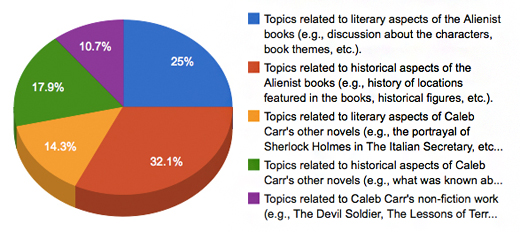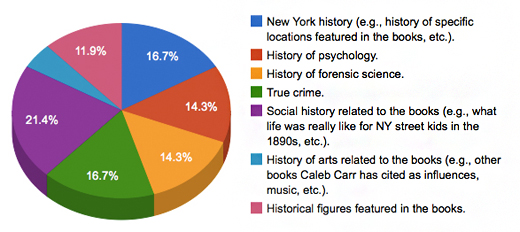It didn’t surprise me to learn that Caleb Carr’s agent and editor had believed him when he originally pitched the story of The Alienist as non-fiction (see the afterword to The Alienist’s 2006 trade paperback edition for the complete–and amusing–tale of intrigue and deception). Even though I had known the novel was fictional when I first read it, many of the background details in the story had such a feeling of authenticity to them that I distinctly remember closing the book upon finishing it and wondering just how much of what I’d read might really have happened. Certainly, I had known that Dr. Laszlo Kreizler, his principal investigative colleagues, and the murderer had been fictional, just as I had known the major historical figures featured in the book were real; but there were minor characters mentioned or included throughout the story who had felt real, but who I knew could have been just as fictional as the principal investigators, developed to meet the needs of the plot.
Some of the characters who intrigued me the most were the other criminals Dr. Kreizler assessed throughout the novel in order to determine whether they could be connected to the case. Indeed, the first of these individuals provided us with our introduction to the Doctor and his methods in Chapter 4. After speaking to our narrator, John Schuyler Moore, on the telephone–and deducing in true Sherlock Holmesian style that Moore was still in his nightclothes–the Doctor requested his friend read an article in The New York Times (while dressing) about a certain Henry Wolff who had shot a five year old girl in the head. The Doctor explained that he was to conduct the psychiatric assessment of Wolff later that morning at Bellevue Hospital’s Insane Pavilion, and he wanted Moore to accompany him on the chance that it would prove relevant to the case.

We can find another such example in Chapter 12, although in this instance the case appears to have been adapted slightly for the purposes of the novel. Specifically, Harris Markowitz of No. 75 Forsyth Street had been accused in the novel of murdering his grandchildren by poisoning their milk prior to gassing them while they slept. Even though the investigative team were already confident by this stage that the serial killer they were hunting was not a poisoner, they felt it might be useful to develop a “negative image” of the killer by looking into such cases; that is, they hoped that by being able to identify more clearly who their killer was not, a clearer picture would emerge of who their killer was. Once again, an article in The New York Times with a date that matches the novel’s timeline can be found that details a highly similar case; however, in the Times’s version of the story, Markowitz had not succeeded in killing the children and had only been accused of attempted murder.
So, if you’ve ever wondered whether some of the background detail in The Alienist or The Angel of Darkness have their origins in fact or are completely fictitious, it’s worth taking the time to look it up through whatever means you have available to you. Over the years that I’ve spent running this website, I can attest that doing so can provide an interesting insight into both the history of the period and the creative process involved in writing the books.




